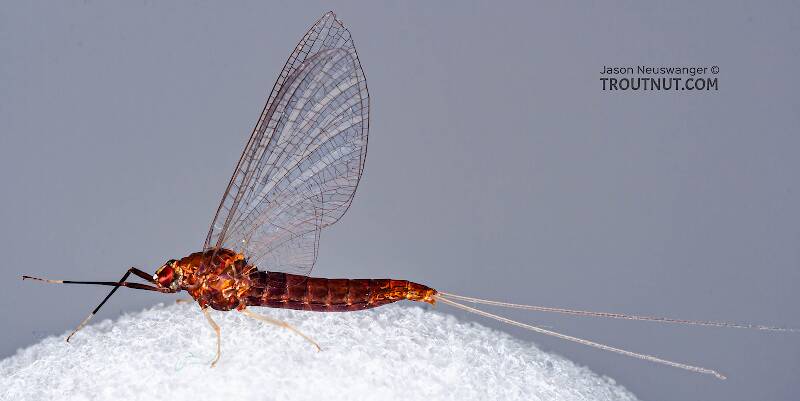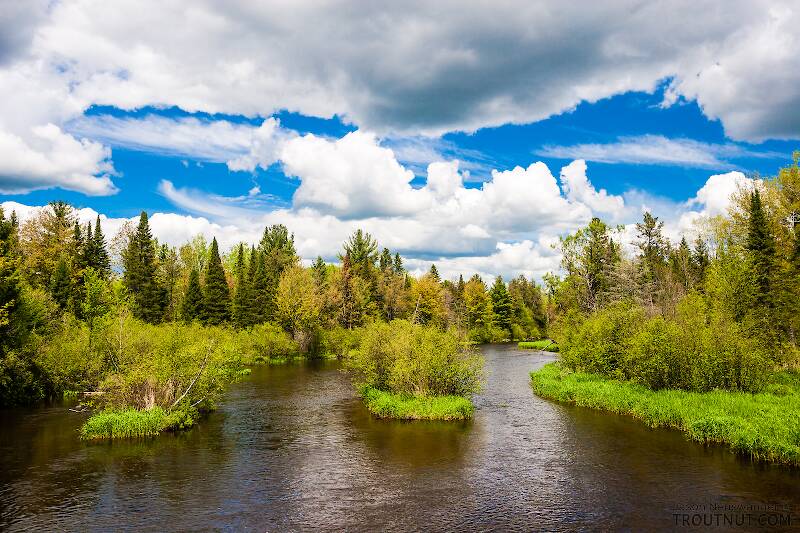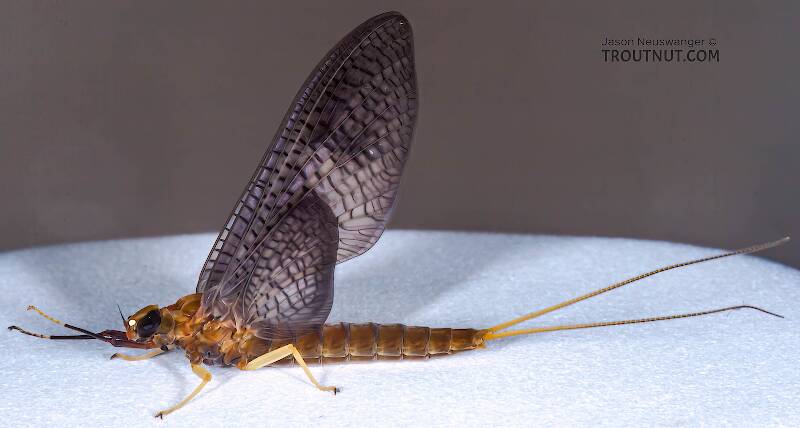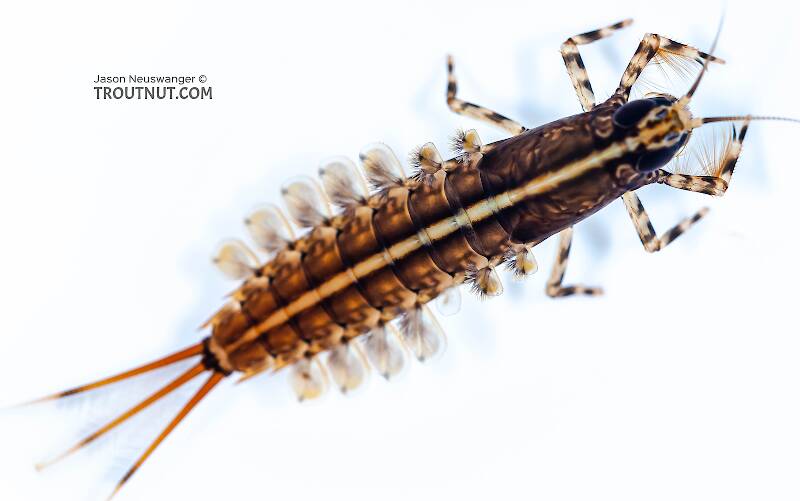
Blue-winged Olives
Baetis
Tiny Baetis mayflies are perhaps the most commonly encountered and imitated by anglers on all American trout streams due to their great abundance, widespread distribution, and trout-friendly emergence habits.
Featured on the forum

I caught this tiny larva without a case, but it seems to key pretty clearly to to Glossosomatidae. From there, the lack of sclerites on the mesonotum points to either Glossosoma or Anagapetus. Although it's difficult to see in a 2D image from the microscope, it's pretty clear in the live 3D view that the pronotum is only excised about 1/3 of its length to accommodate the forecoxa, not 2/3, which points to Glossosoma at Couplet 5 of the Key to Genera of Glossosomatidae Larvae.

Troutnut is a project started in 2003 by salmonid ecologist Jason "Troutnut" Neuswanger to help anglers and
fly tyers unabashedly embrace the entomological side of the sport. Learn more about Troutnut or
support the project for an enhanced experience here.
Leadwing Coachmen
This common name refers to only one genus. Click its scientific name to learn more.
Mayfly Genus Isonychia
These are very rarely called Leadwing Coachmen.
Sporadic hatches are rarely as outstanding as those of Isonychia. On streams with good populations, they are reliably hatching in light numbers, here and there, for most of the evening through most of the mid- to late season.
The spinners, and occasionally the duns, produce more concentrated action, but the real value of the Isonychia hatch is its duration and the size of the flies; large trout become ever watchful for them, even when they aren't emerging.
All the species of Isonychia are similar in appearance and behavior.
The spinners, and occasionally the duns, produce more concentrated action, but the real value of the Isonychia hatch is its duration and the size of the flies; large trout become ever watchful for them, even when they aren't emerging.
All the species of Isonychia are similar in appearance and behavior.

I collected this female together with a male.
See 18 more specimens...



